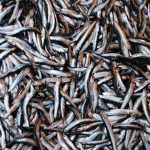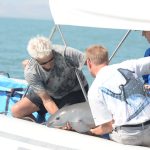2016 was an eventful year on many accounts. The Nereus Program produced some incredible research and stories on oceans and fisheries in 2016. Here we showcase the top ten most popular stories on our site this year.
1. How will this year’s El Nino affect oceans and fisheries?

Though posted in 2015, this story continues to be the most popular on our site. It outlines how El Niños form, how long they last, how often they occur, and the effects of these weather events on marine ecosystems, fisheries, and species.
“Locally, like off the coast of Vancouver, Northern California, Oregon and Washington, there are going to be times when tropical species like tuna, swordfish, wahoo and mahi mahi are caught in greater abundances than usual,” said Ryan Rykaczewski, Nereus Program alumni and assistant professor at the University of South Carolina. “It may seem like a good thing, but the presence of these warm-water species near the coast indicates the absence of conditions that are favoured by our resident cold-water species.”
2. Why is the global fishing industry given $35 billion in subsidies each year?

A 2016 study by OceanCanada, Sea Around Us, and Nereus Program researchers found that the global fishing industry is being supported by $35 billion yearly in government subsidies, the majority of these, upwards of $20 billion annually, promote increased capacity that can lead to harmful impacts such as overfishing. This interview with Nereus Research Alumnus Wilf Swartz gets to the nitty gritty of what fisheries subsidies are and the benefits and negative impacts of subsidies on fish stocks.
3. What effects will Brexit have on the UK’s fishing industry? Uncertainties facing policy, science and society.

The results of Brexit – the referendum vote for the UK to leave the European Union – came as a shock to many. While many effects are still uncertain, this post looks at the possible impacts on fisheries and oceans from policy, science, and social outlooks. From the policy standpoint, uncertainties arise in terms of fisheries management, Exclusive Economic Zones (EEZ), marine conservation obligations, discard bans, and Scotland’s independence. Brexit caused uncertainties to science and how it was conducted because of research funding, data storing, and human resources across the EU. There could also be social impacts, including market access, seafood prices, and fishers’ livelihoods.
4. Science fiction prototyping to imagine radical future ocean scenarios
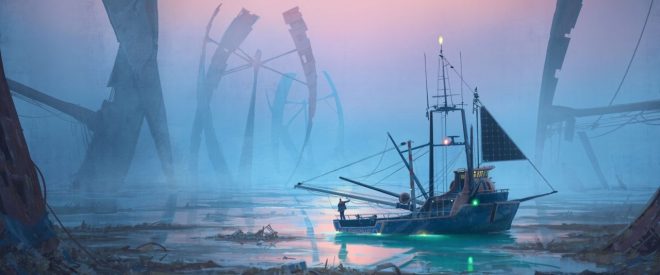
We know the oceans are quickly changing; we are at a point in time where very different future oceans could be laid out in front of us. As part of his Nereus fellowship at Stockholm Resilience Centre, Andrew Merrie devised a set of four radical futures for global oceans and fisheries using an innovative method called science fiction prototyping. Two of the scenarios represent utopian futures, the other two are more dystopian. They are written as speculative fiction in different, engaging narrative styles: a travel magazine article, an obituary, the transcript of a “TED”-like talk, and a series of recovered journal entries. This post displays all four images, which were originally published in Wired.
5. What impacts will the Trans-Pacific Partnership (TPP) have on the trade of fish and seafood?
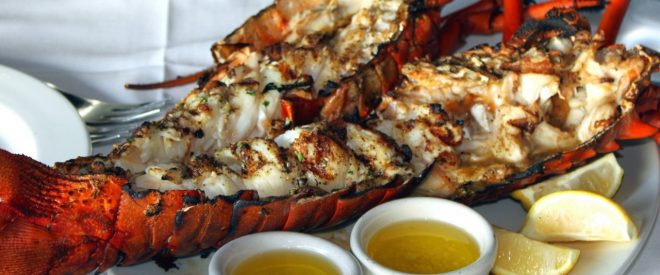
The Trans-Pacific Partnership (TPP) agreement was reached in October of 2015, yet there is continued talk and disagreement about it. This post lays out how the TPP could potentially affect the trade of fish and seafood between the twelve countries involved, if seafood prices would raise or lower, and how it could help sustainable fisheries management, promote conservation of important marine species and combat illegal fishing.
6. Our jelly-like relatives: Common misconceptions about salps

“Salps are barrel-shaped gelatinous zooplankton; they kind of look like jellies but they don’t have any tentacles. As larvae, they have this thin notochord that is very similar to our backbone making them our closest living invertebrate relative,” said Nereus Fellow Natasha Henschke, Princeton University. “Salps are in the subphylum of Tunicata which are part of Chordata, same as humans, while jellyfish are Cnidaria, the same as corals. Salps and jellyfish have separate ancestries, diverging 800 million years ago. They’re evolutionarily very different even though they look similar.”
Henschke published the paper “Rethinking the Roles of Salps in the Ocean” this year, in this post she describes these very unique creatures.
7. Jellyfish for dinner: Is fishing a viable solution to the increase in jellyfish blooms?

Speaking of jellies, Natasha Henchke wrote this blog post which looks at the increasing occurrences of jellyfish blooms and whether we should be eating them.
“Fishing jellyfish is also only a short-term management solution. As their life cycle involves benthic and pelagic phases, fishing jellyfish is akin to harvesting apples. You can pick every single apple from an apple tree, yet next year it will still produce more apples,” she writes. “Similarly, you can remove all the jellyfish in an area, however, if the benthic polyp population is still healthy, they will continue to produce young jellyfish each year.”
8. The impending extinction of the vaquita is not just a fishing problem — it’s a social and ecological one too

The vaquita is going extinct at an alarming rate, from an estimated 600 individuals in 1996 to 60 in 2016. It’s the world’s smallest marine mammal, with a maximum length of only 1.5 meters (4.9 feet). And with its dark eye patches and mouth that seems to curl up into a smile even after death, the vaquita is not missing out on the cute factor. Not much is known about the world’s most endangered marine mammal, which wasn’t described by scientists until 1958. It’s rarely seen even by the fishermen that sail local waters.
How is this little cetacean going extinct and much of the world doesn’t know about it? Many blame the fishing in its habitat — the vaquita get stuck in gillnets and drown. But Nereus Program Manager and Research Associate Andrés Cisneros-Montemayor believes there are bigger social and ecological issues at play.
9. Instability in the South China Sea: Ecosystem challenges and political complexities

Disputes over sovereignty of the South China Sea, a very important fishing and marine services region, continued to happen in 2016. In July an international tribunal in The Hague ruled in favour of the Philippines, rejecting China’s claim of historical title over some of these waters and ruling that China had unlawfully prevented the exercise of traditional fishing rights in particular locations, while also conducting fishing within areas under Filipino jurisdiction without permission.
This post outlines the value of the South China Sea and why so many countries are fighting over it. It also discusses the current state of the ecosystems and fisheries here and the management issues going forward.
10. Illustrating the ocean: The process of depicting the complexity of marine ecosystems
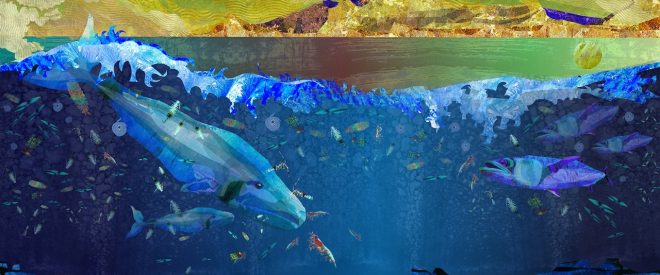
Over the past few years, artist Jenn Paul Glaser has been creating unique illustrations depicting complex ocean systems. Here she discusses her process and the tools she uses to make these stunning pieces.




